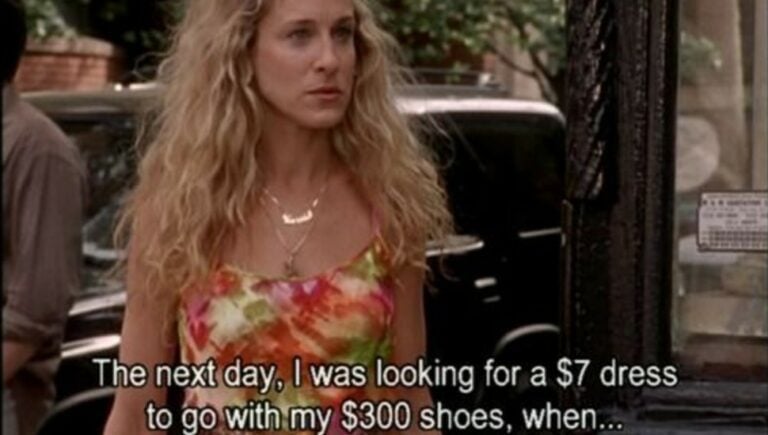The only stigma associated with wearing second-hand clothes from op shops these days is steeze.
While there’s no doubt some cool brands making cool stuff today, there’s nothing like finding yourself some rare pre-loved gems or one-off pieces, repping a look from a past era and shopping sustainably.
But have you found that whole thing’s becoming much harder to achieve with each and every time you step into an op shop?
If you consider yourself a regular thrifter or you maintain heading into op shops every now and then, you could definitely vouch for the fact that more often than not, you probably pick up something, look at price tag and go, “what the?”
These days you won’t be able to grab yourself for anything less than $9 – unless you’re having a good day on the thrift.
And this concept is far from new. 11 years ago, Lady Melbourne published an article on the topic. She said, “I was however nothing short of staggered the other day when I went to the Hampton Salvo’s store to find so many clothes at retail prices.”
“One rack titled ‘Designer Women’s Clothes’ had fast fashion labels like Valley Girl, CMK, Sussan and Sportsgirl, all at prices you would expect to pay for new items. Anything remotely ‘vintage’ looking had a higher price tag on it, one fur coat was going for $350.”
She continued, “I crossed the road to the competing Vinnies store that seemed a little more in line with what you would typically expect to find in op-shops.”
So we’re posed with the question: why is this price inflation happening? And not just on designer goods. On EVERYTHING.
What’s the root of the cause? Are resellers (people who scour op shops for dope vintage pieces at a low price and sell for a profit) the cause? Generally speaking, buying secondhand was once the more cost effective option, especially in comparison to fast fashion. But could we say that same notion still applied today?
I mean, if it wasn’t for our obsession with taking style cues from the generations before us, we probably wouldn’t be as obsessed with hitting the op shops. And thanks to this obsession, resellers have capitalised. Just take a look at Depop or Instagram and you couldn’t go past a few accounts without coming past a resell account.
According to thredUP, the secondhand market is set to hit $64B in the next five years. And what’s more is that resale is expected to overtake the traditional thrift and donation segment by the year 2024.
And on top of all of this, those who run op shops will continue to bump up their prices accordingly.
While reselling cool items that are on-trend is obviously not the definition of breaking the law, it raises some questions. Are items being priced fairly? Are items that aren’t rare or hard to come by being priced for more than they retailed? Should we accept overpriced things because it means that we’re ‘supporting small business’?
The sad thing is, all of this is having a bigger impact on those of us who aren’t just interested in fashion. Reselling is leaving those who are disadvantaged – who truly need to shop the most cost effective option out of the equation. Op shopping is slowly becoming inaccessible.
So you have to wonder, is this whole thing going to go full circle? And what will happen when op shop prices and reselling prices hit the ceiling? Will we simply revert to buying fashion fast?
Watch the ultimate ode to op shops: ‘Thrift Shop’ by Macklemore & Ryan Lewis.

































